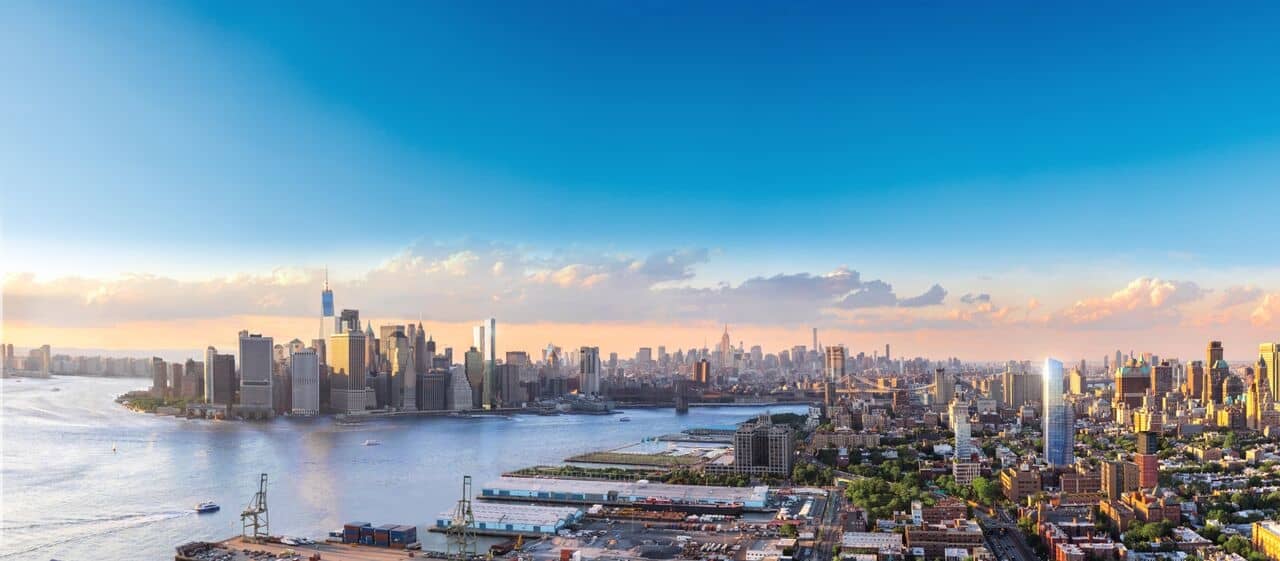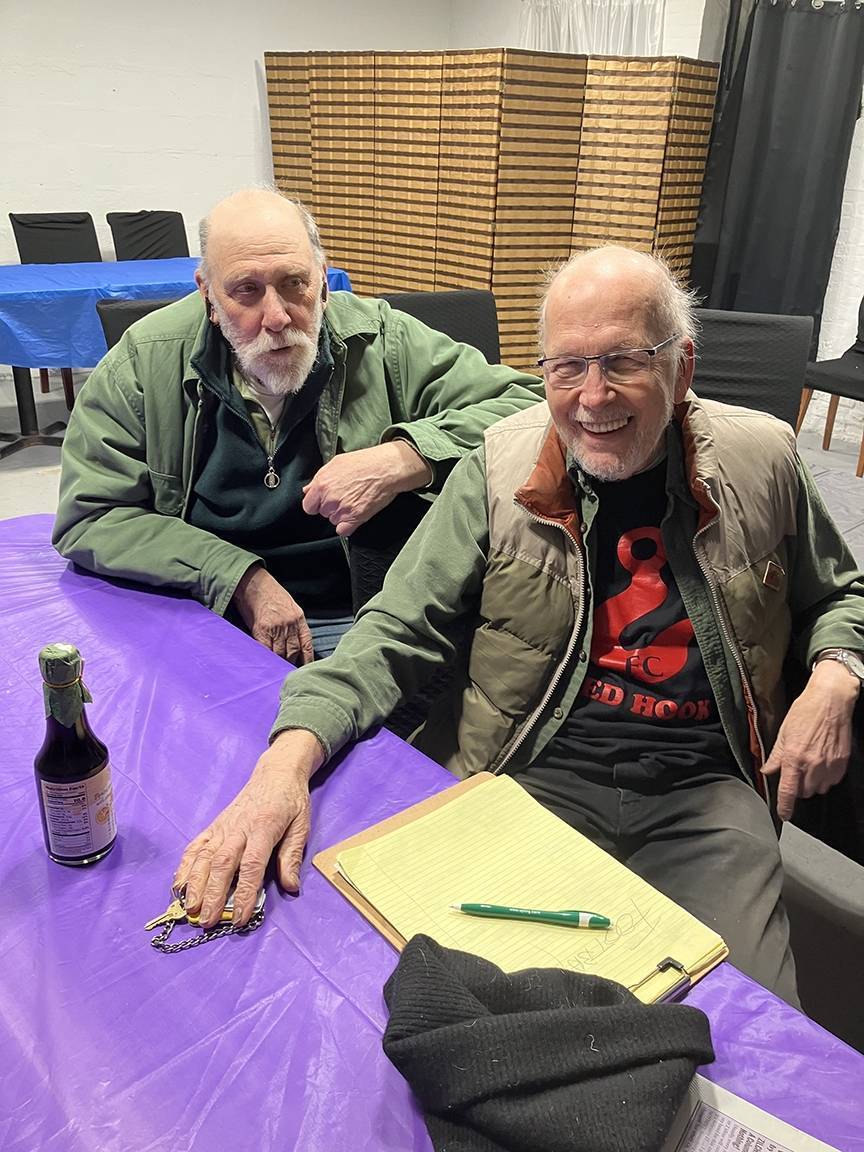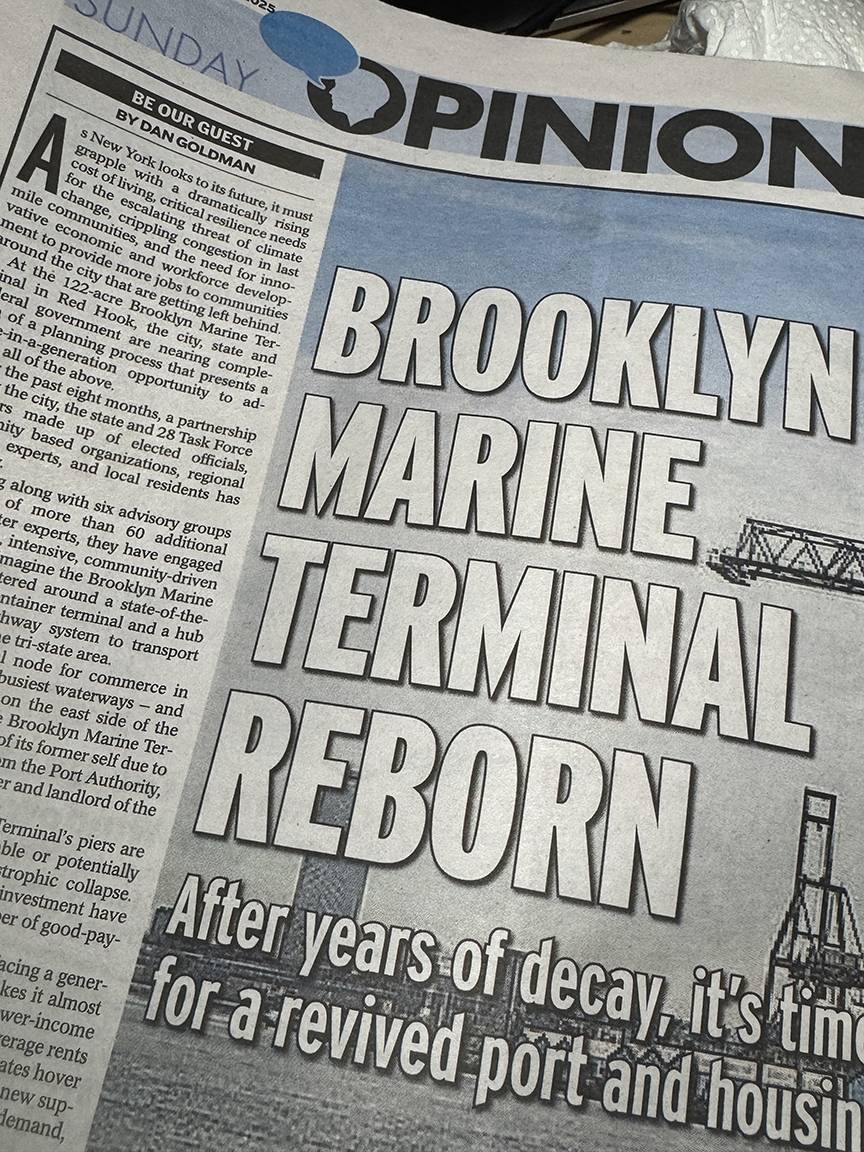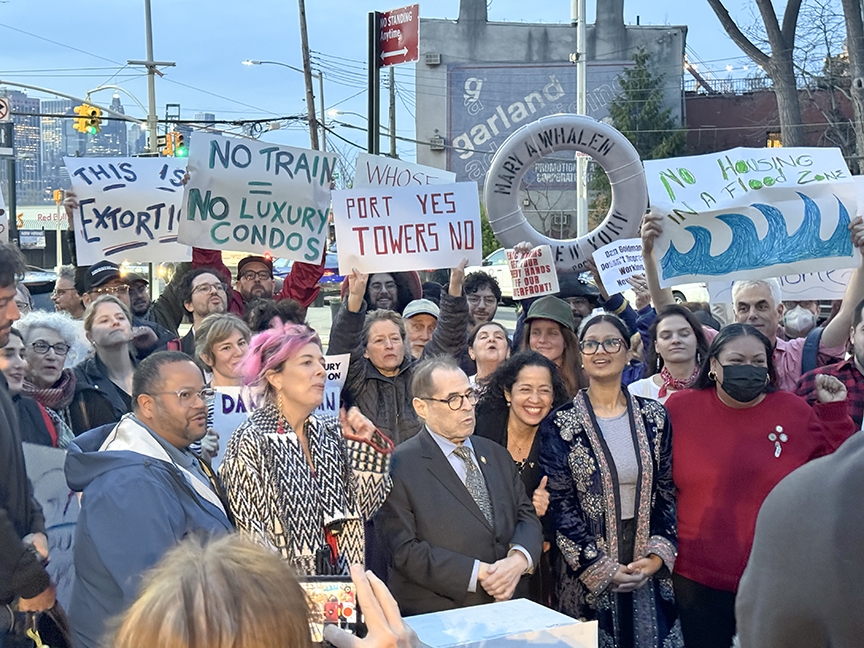From my perch here at the Star-Revue I have been closely following the saga of the Red Hook Container Terminal since I started the paper fifteen years ago. The removal of owner Sal Catucci by the Port Authority (which some thought was shady but if there was any shadiness there it’s long under a rug someplace) was my first investigative story. The one constant in all these years has been the fact that real estate developers have been lusting over what current terminal operator Mike Stamatis calls “the view.”
Just like the nearby triple cantilever—the part of the BQE in Brooklyn Heights that has been in danger of collapsing for decades—the future of waterfront land use has been constantly kicked down the road as politicians couldn’t figure out what to do.
You knew that the Port Authority really wanted to kick out the container terminal so they could sell the valuable property for real estate development, but couldn’t figure out how to negotiate the politics, so instead they failed to maintain the property, probably in hopes Stamatis would give up and shut down.
He didn’t but politicians Adams and Hochul came to the Port Authority with a plan to ease them out and disguise the real estate project with a cover of improving the harbor facility, grandly renamed the Brooklyn Marine Terminal (BMT – not the subway),
The charade ended in December when EDC unveiled plans to build thousands of market rate condos and rental apartments all along the waterfront, using a technicality to avoid having the go through a zoning change of the industrial property, using as a justification the need to upgrade the piers that the Port Authority let rot.
In reality, the Port Authority is still probably liable for the repairs, but that seems to have joined Catucci under a rug someplace.
Our cover story this month is all why people love living and working in Red Hook. None of it has to do with large luxury condo buildings. It seems evident that hardly anybody that is already living and working here wants what the real estate developers can’t wait to give us.
With one side of their mouth, the Economic Development Corporation tells us that the future of the waterfront is in control of the community—the other side insists that any decision on the future must include a doubling or tripling of our population.
As I wrote last month, the only hope we have to avoid this are the courts. The one time in my life that the courts killed something that big money wanted was Manhattan’s Westway. Like the BMT, this was a gigantic project involving both the governor and the mayor to build a giant underground highway. This is how it is described on the Village Preservation website:
“Fears of increased traffic, deteriorating air quality, and other environmental concerns were widespread. Greenwich Village resident Marcy Benstock led the fight and founded the Clean Air Campaign, which joined the lawsuit to revoke the 1981 dredging permit issued to the Army Corps of Engineers. In 1982, based on data from studies done by the Corps, the U.S. District Court stopped work on the project, citing adverse environmental effects, including destruction of the spawning area for striped bass. In 1985, New York City officially abandoned the plans for Westway.”
Last month I asked for interested people to brainstorm a legal strategy. I didn’t hear from anyone, but this is not something that should be given up on. I am sure a real lawyer would have some great ideas, but in lieu of that for now, here are some of mine.
1 – Why do we have to do all the suffering? This comes from something that John Leyva, a local activist, said at a recent BMT meeting. His question was that why is it that a revitalized terminal is played up as something that will benefit the whole city (getting trucks off the road, less pollution, etc), yet we are asked to bear all the costs of it.
That makes a lot of sense to me – it doesn’t seem fair and maybe there is some law in there someplace. I would be satisfied with about 4 buildings, and then spread the rest of them at other places around the city, and use the taxes from all the rents and condo sales to create a great maritime facility that will benefit all, if that’s actually the way we want to fund things.
2 – Building in a flood zone. A number of years ago a somewhat sketchy for-profit nursing home operator was planning to move his facility to land he had already purchased in Red Hook. In that case he had to get approval for a zoning change, as he said he had to build ten stories. There was a bit of community opposition and in the end Council member was able to quash the zoning change, citing the danger of having to evacuate a building full of elderly people in an area that had recently been subject to the extreme weather event called Hurricane Sandy. That’s the place where a storage facility was finally built, across from Pioneerworks.
3 – Using a State Entity to avoid local zoning laws. There’s got to be some legal technicality that I don’t know about that caused the mayor and the governor to collude on a plan to build residential properties in an industrial zoned area without city oversight.
I could probably spend a month or two studying city and state laws and precedents to completely understand the sovereignty and home rule and other assorted issues to create some sort of a legal case, but then I’d never get this paper to the printer and get it distributed, and do all the other business things that I do that help me do this publication.
But a law firm is set up to figure this stuff out and maybe there is something there. It seems like some kind of loophole that needs questioning.
So anyway, I’m hoping that somebody reading this will get inspired and get somebody else inspired which would make this into a call to action to save our community.
Saving community is what this paper is all about, in case you weren’t paying attention
Author
-

George Fiala has worked in radio, newspapers and direct marketing his whole life, except for when he was a vendor at Shea Stadium, pizza and cheesesteak maker in Lancaster, PA, and an occasional comic book dealer. He studied English and drinking in college, international relations at the New School, and in his spare time plays drums and fixes pinball machines.
View all posts
George Fiala has worked in radio, newspapers and direct marketing his whole life, except for when he was a vendor at Shea Stadium, pizza and cheesesteak maker in Lancaster, PA, and an occasional comic book dealer. He studied English and drinking in college, international relations at the New School, and in his spare time plays drums and fixes pinball machines.












One Comment
I think nearly all of the Star Revue readers will agree: the very last home that has any right to be built in Red Hook or Columbia Street just happens to be their own.
I would go even further than that. You can achieve this with very simple legislation. No housing should exist near the water. With the community speaking in a clear voice, I think we can make our message loud and clear: Nobody should be building in a flood zone, starting with us. That’s why I propose everyone reading this pave over their homes so we can use the space for shipping containers.